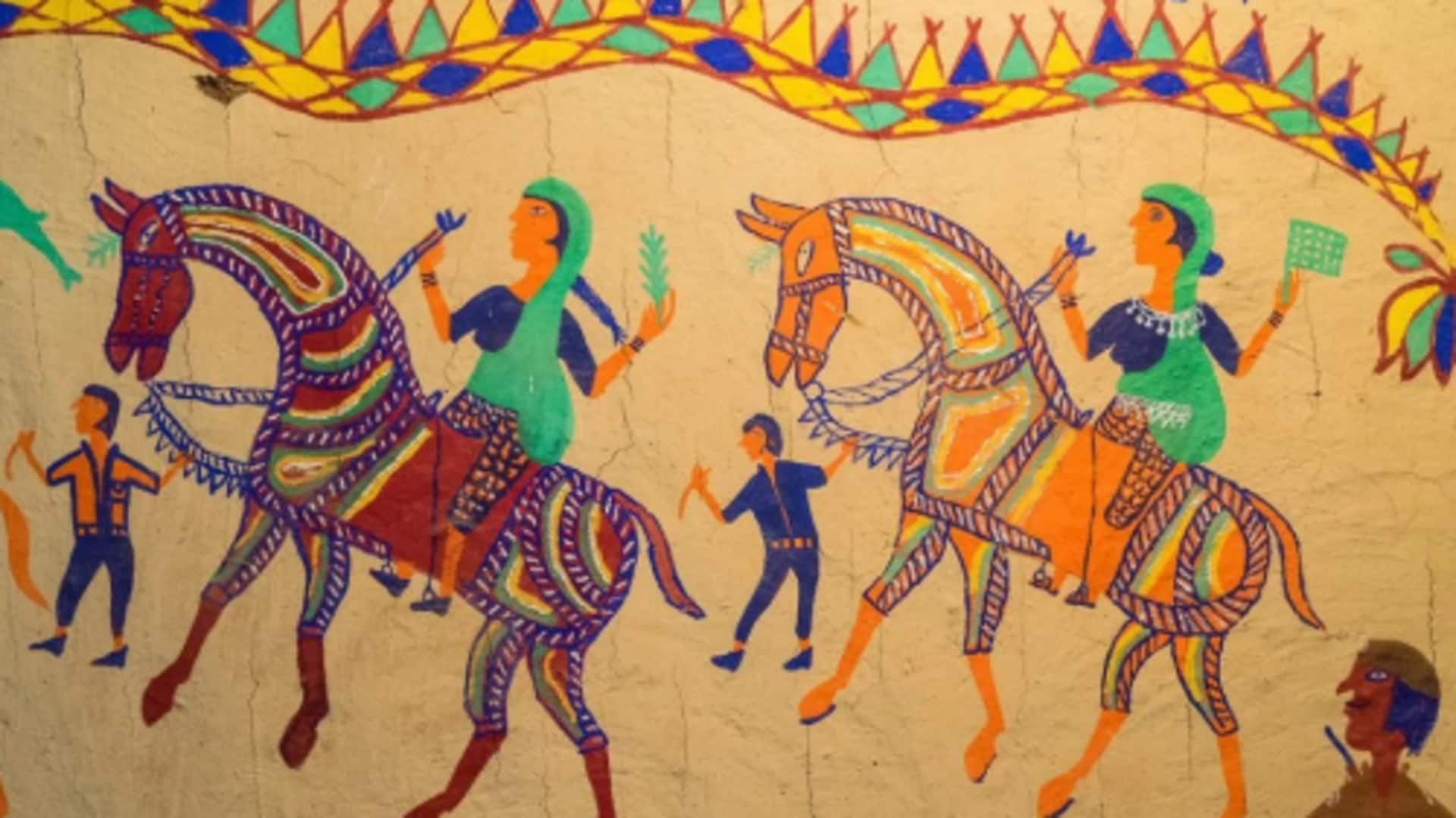
Exploring Pithora: A timeless Gujarati art form
What's the story
Pithora is a beautiful, ritualistic art form from Gujarat, India. This traditional style of painting is closely associated with the cultural practices of the Rathwa and Bhilala tribes. It is used as a medium to thank deities for their blessings or to seek their favors. The paintings are usually done on walls with natural colors from local materials, featuring detailed patterns and motifs of cultural importance.
#1
Historical significance of Pithora
Pithora paintings are an inseparable part of tribal life since centuries. They are not just pretty to look at but a visual representation of the community's history and faith. These paintings generally narrate stories from daily life, folklore, and mythology, giving an insight into their way of living and spirituality. The tradition has been carried forward over ages, retaining its essence and cultural importance.
#2
Creation process involved in Pithora
The creation of a Pithora painting takes several ritualistic steps performed by the skilled artists called lakhara. From preparing the wall surface with cow dung and mud paste for durability, to using natural pigments derived from locally sourced materials such as rice flour, turmeric, and leaves to paint vivid images on this canvas-like surface—every step is well-thought-out. Each color has its own meanings too.
#3
Symbolism in Pithora paintings
Symbolism is an integral part of Pithora paintings. Horses are drawn to symbolize power and prosperity, peacocks for beauty, and trees for growth and fertility. These symbols are weaved together in complex structures to narrate stories/messages to God or one's ancestors. Knowing these symbols gives a better understanding of what these communities hold dear.
#4
Contemporary relevance of Pithora art
Despite its ancient origins, Pithora art has survived to this day due to efforts to preserve this unique heritage form in modern times. Artists have adapted traditional techniques, while exploring new themes relevant to contemporary society, without drifting away from their roots entirely—ensuring that future generations can appreciate both its historical significance and evolving interpretations within today's context.